These photographs, which span the years 1915 to 1919, show the development of the base at Hawkcraig Point.
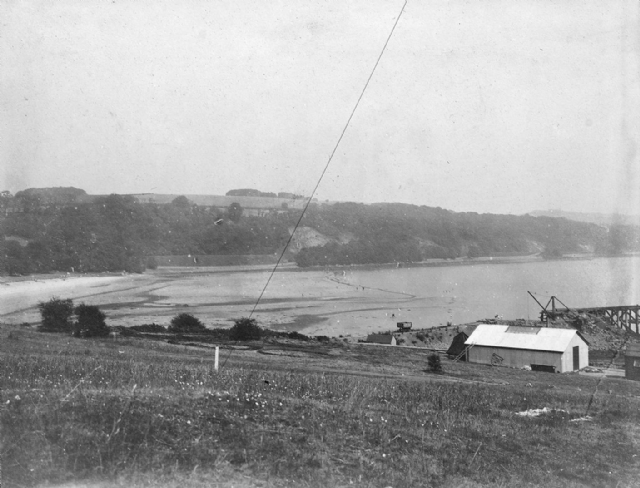
This is possibly the earliest photograph of the site of the base and probably dates from 1915. In the foreground on the right hand side can be seen a large building, behind which is the wooden pier that was built many years before for the loading of stone from the quarry at Hawkcraig Point, owned and operated by the Bald family. One of the quarry trucks is visible on the left of the building. This building and the pier were subsequently taken over for use by HMS Tarlair and are visible in some of the later photographs.
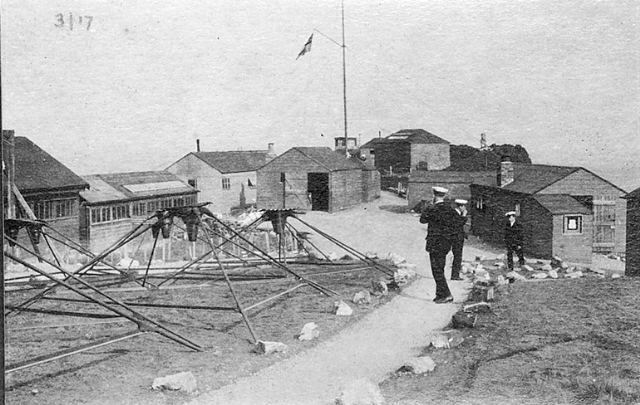
This photograph was taken in March 1917, looking east along Hawkcraig Point. In the foreground are a number of hydrophone tripod mounts. These tripods would be lowered to the sea bed and a cable run from the hydrophone to an on-shore listening station. Operators would monitor the hydrophones in an attempt to detect approaching U-boats.
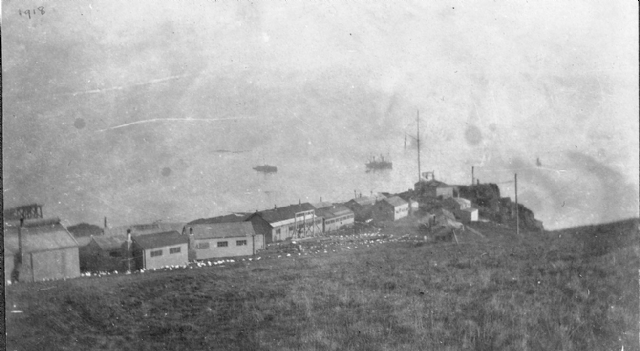
This photograph of the base was taken in 1918 and shows that more huts have been constructed. Eventually the base numbered almost 20 wooden huts incorporating lecture and training rooms, workshops and laboratories for the manufacture and development of new listening equipment, mess halls, but notably no accommodation - staff were billeted within Aberdour.
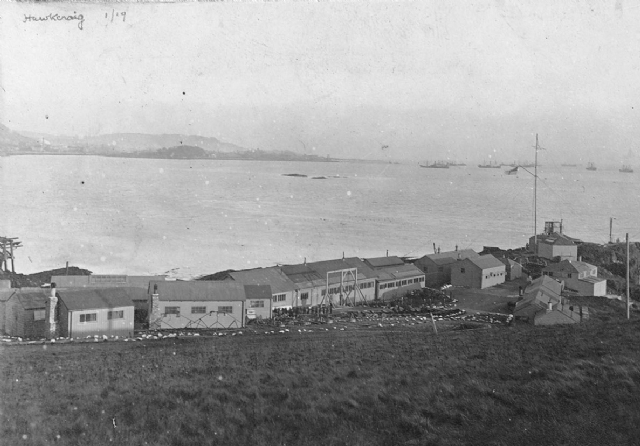
This picture of Hawkcraig Point was taken in January 1919. Many of the ships seconded to the base can be seen in the bay. The observation tower, built for the visit by King George V, is visible rear right - the tallest building in the photograph.
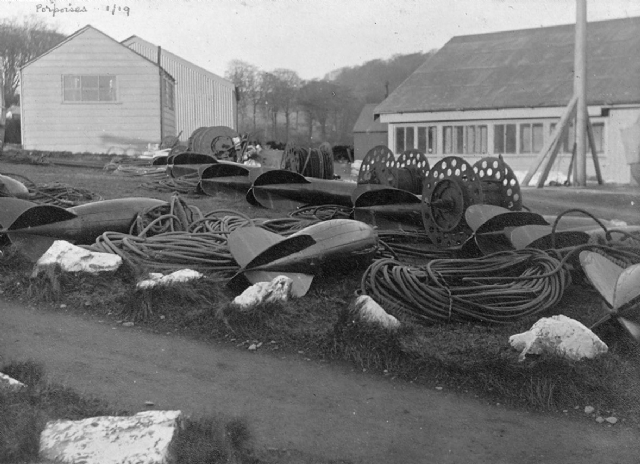
This photo was taken in January 1919. In the foreground are a number of porpoise type hydrophones, which were designed to be towed behind the "listening" boat.These were probably the most sophisticated hydrophones developed and manufactured at HMS Tarlair. Each porpoise contained a single directional hydrophone which could be rotated remotely in order to provide information as to the direction of the sounds detected.
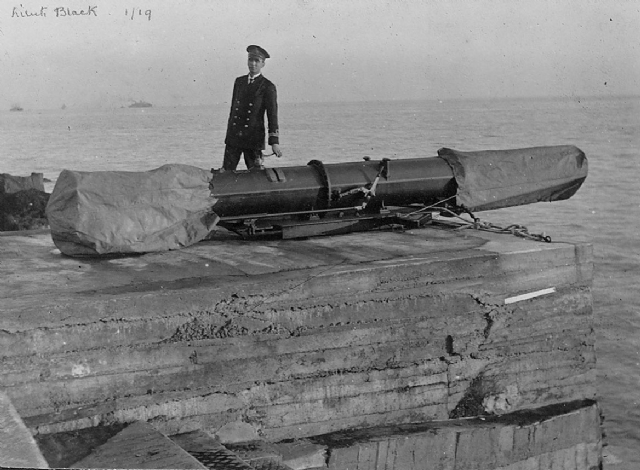
Lieutenant Black, January 1919.
Lt. Black is standing next to a torpedo tube. We know that experiments were carried out to develop wireless controlled vehicles and it is possible that there were plans to develop remote controlled torpedoes, the advantages of which are obvious.
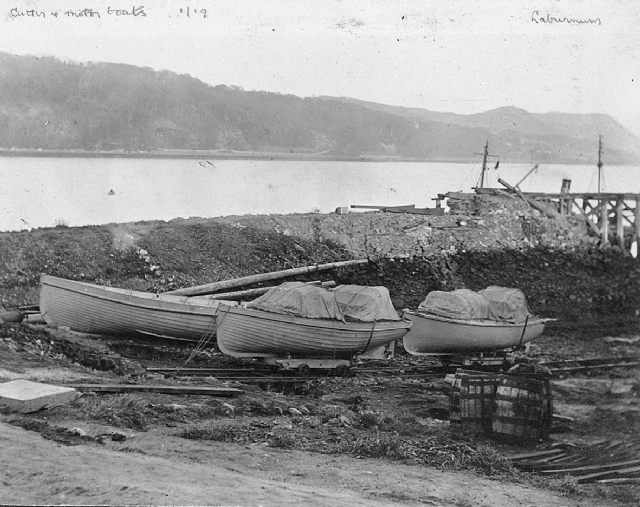
Cutter and motorboats, Jan 1919, some of which would have been used for hydrophone trials.
In the background is the old wooden quarry pier, which was incorporated into the base.
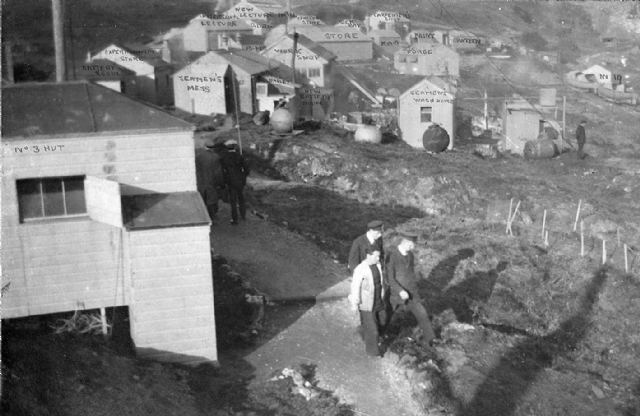
A view of the huts, probably taken from the watch tower looking East. Ryan has annotated this photo to show the uses of some of the huts, e.g. store, seamen's mess, lecture hall, canteen, work shop.
In the picture can be seen a number of sea mines. Whether these were being kept ready for deployment in the Firth of Forth or are of the magnetophone type, which was developed at HMS Tarlair, is not clear.
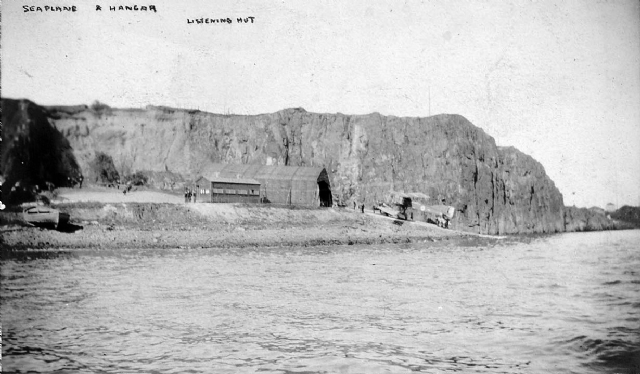
Seaplane, hangar and listening hut.
A seaplane station was established in 1913 at Hawkcraig and continued to be in use until the end of WW1. The seaplanes were made use of by HMS Tarlair to determine how they might be used in the early detection of submarines and also in experiments in wireless control, which included the setting up of a motor launch - NYKR (No Yachting Knowledge Required) - for remote control from a seaplane.
The hangar for the seaplane was little more than a very large canvas tent. Cables from hydrophones deployed on the Firth of Forth seabed were run through to the listening hut, from which they could be monitored. Other cables ran from the hut to the mines deployed in the Firth. If it was thought that a submarine had been detected near one of these mines, it could be remotely detonated by an operator listening in the hut.
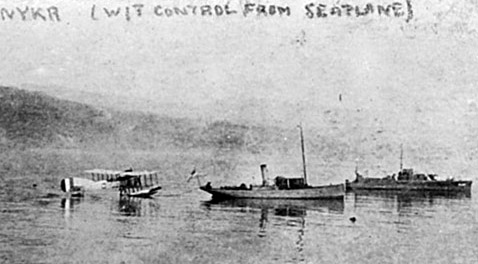
NYKR (No Yachting Knowledge Required) and seaplane - detail.
Ryan has annotated this photograph 'NKYR (W/T control from seaplane)'. The W/T stands for Wireless Telegraphy.
That these experiments were successful, we know from the following account, from "Hush; or, The hydrophone service" by H.W.Wilson, 1920:
The business on which this seaplane went up, as often as not, was control ... on these occasions there was something unnatural about the little motor launch ... Suddenly she throbs exultantly and sets off as on some settled purpose. She has been started by the seaplane, and will be steered, controlled and stopped by the same."
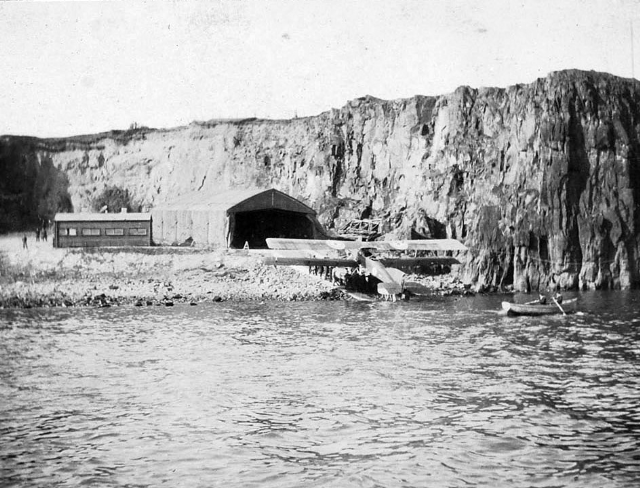
Launch of the seaplane from the seaplane station beneath Hawkcraig cliffs.
The plane was guided down the steep concrete slipway by several men, some of whom may have been required to stand on the floats or hang from the wings in order to balance the plane.
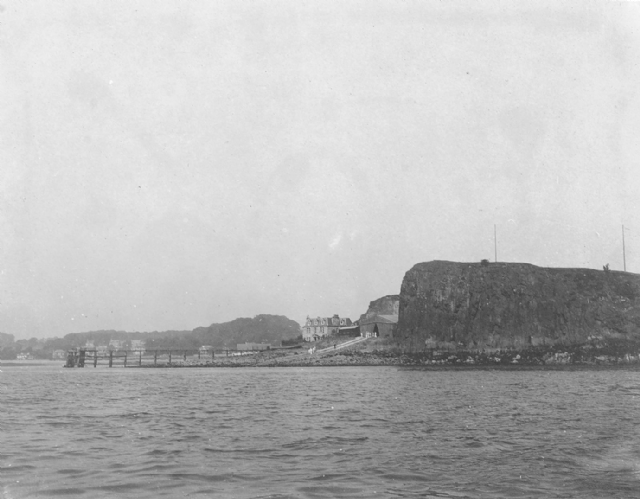
View of HMS Tarlair and the seaplane base, with the Forth View Hotel in the background (still there today), where some of the men were billeted.
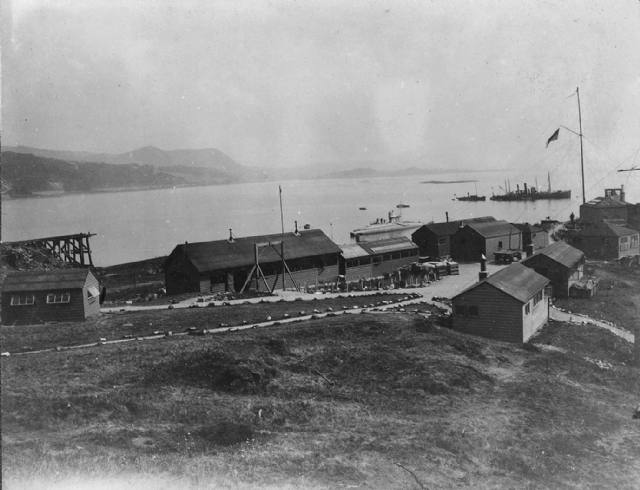
A later view of HMS Tarlair looking East. Note submarine in the bay. This vessel had been seconded to the base for sea trials.
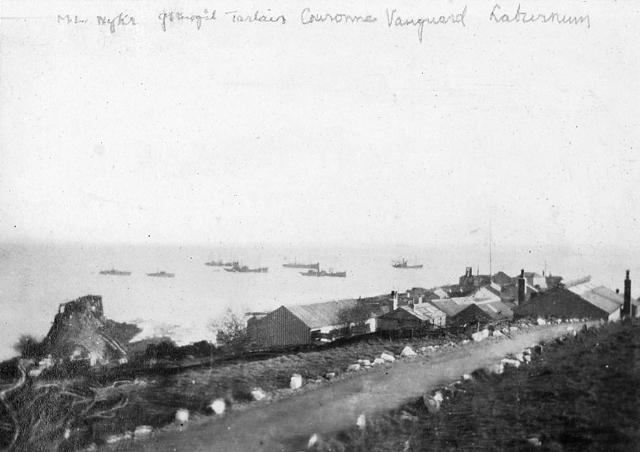
This photograph shows the access road to the base and a number of vessels moored in the bay. Ryan has annotated the picture with the names, "M.L. Nykr, G?, Tarlair, Cousonne, Vanguard, Laburnum". The Tarlair mentioned is the drifter HMD Tarlair that was originally seconded to Ryan to support his work on hydrophone development.
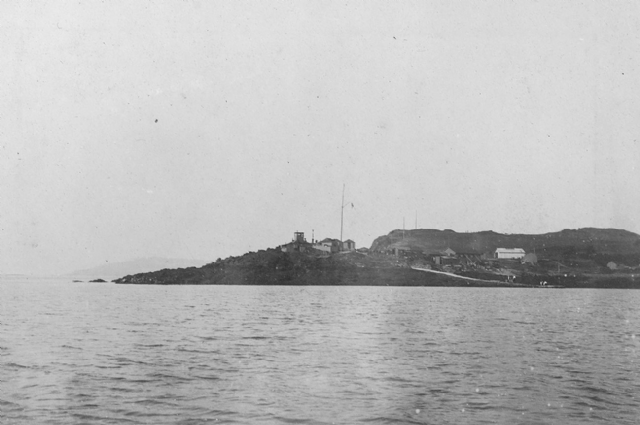
View of the base from the Forth. Note the watch tower, built for King George V's visit.
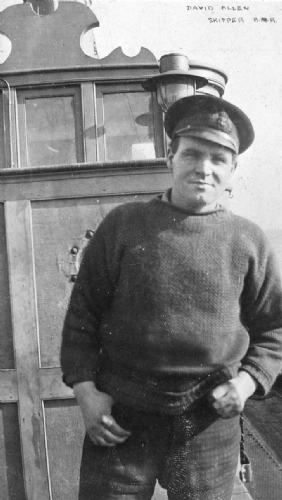
David Allen, skipper of HMD Tarlair
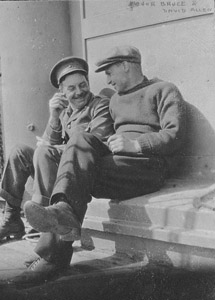
Major Bruce and David Allen (skipper of HMD Tarlair).
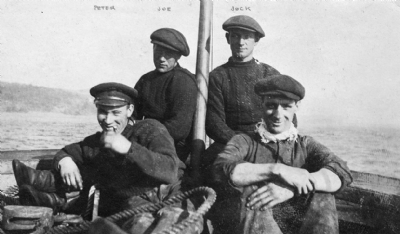
The crew of HMD Tarlair. Ryan has annotated the photograph with crew names, "Peter, Joe, Jock". The identity of the fourth man is unknown.
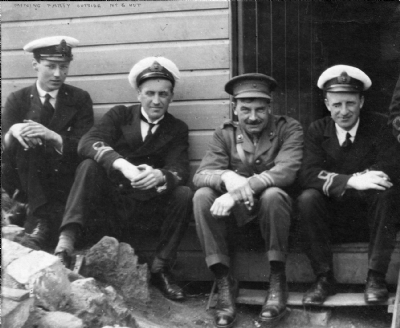
"Mining party outside No. 6 hut", possibly waiting in preparation for assisting in the laying of mines in the Firth of Forth. Second from right appears to be Major Bruce.
